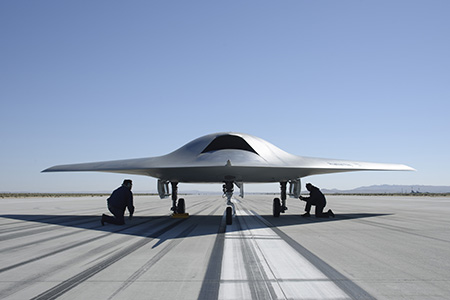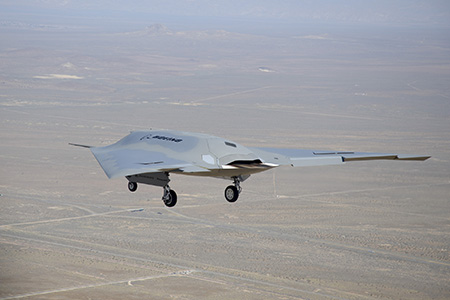Re: NOTÍCIAS
Enviado: Sáb Abr 30, 2011 8:07 pm

Remota as possibilidades de uso no Tejas.AlbertoRJ escreveu:Kaveri engine to power fifth generation fighter aircraft
Under development for over two decades, the indigenous fighter jet engine ‘Kaveri’ will be used for powering the home-grown fifth generation Advanced Medium Combat Aircraft (AMCA).
Being developed by DRDO’s Gas Turbine research Establishment (GTRE), the Kaveri was initially being developed for the LCA Tejas programme but now it will be used on the AMCA, which is expected to be ready by 2016-17, senior officials told PTI here.
The AMCA is a twin-engine indigenous fighter aircraft programme for which initial sanctions have already been accorded by the Defence Ministry, they added.
The indigenous fighter aircraft engine programme was first started in 1986 and has suffered delays and cost over-runs. It was also marred by the technology denial regimes in the 90s.
After not being able to get the desired thrust for powering fighter aircraft, the DRDO entered into a Joint Venture with the French engine manufacturers Snecma to further enhance its capabilities.
“In recent times, the engine has been able to produce thrust of 70-75 Kilo Newton but what the IAF and other stake-holders desire is power between 90—95 KN.
“I think with the JV with Snecma in place now, we would be able to achieve these parameters in near future,” they said.
On using the Kaveri for the LCA, they said the engine would be fitted on the first 40 LCAs to be supplied to the IAF when they come for upgrades to the DRDO in the latter half of the decade.
Due to the absence of an indigenous engine, GE engines from the United States were procured to power the LCAs and recently, another tender was awarded to the American company for supplying 99 engines for the advanced version of the Tejas.
On the present status of the programme, officials said the maiden flight test of the Kaveri was completed successfully during the Flying Test Bed (FTB) trials at the Gromov Flight Research Institute in Moscow November last year.
During the coming months, 50-60 test flights will be carried out to mature the engine in terms of reliability, safety and airworthiness.
These trials would pave the way for further flight trials of Kaveri engine with a fighter aircraft, they added.
http://www.thehindu.com/sci-tech/techno ... 127075.ece
Kaveri engine completes tests in Russia
New Delhi, May 2 (IANS) The India-made aircraft engine Kaveri has successfully completed its first phase of testing at a Russian centre, in a step towards its operationalisation on the indigenous fighter jets.
The engine, integrated on a Russian IL-76 transporter at the Gromov Flight Research Institute in Russia, completed its 11 trials of over 20 hours till April, the Defence Research and Development Organisation (DRD0) said.
‘Kaveri engine was integrated with IL-76 aircraft, which is a well established flying test bed for engines… Eleven flight tests for about 20 hours duration have been completed till April,’ the DRDO said.
Kaveri was one of four engines on the flying test bed platform. It was flight tested for up to 12 km maximum altitude and a maximum forward speed of 0.7 Mach (0.7 seven times the speed of sound) and engine performance under different operating conditions.
‘With this, the first phase of Kaveri engine flying test bed trials completed successfully,’ a DRDO statement said. ‘Further tests will continue from May.’
Kaveri is being developed for indigenous light combat aircraft at the Gas Turbine Research Establishment (GTRE) in Bangalore with the active support of several DRDO labs, academic institutions and industry partners.
During development phase, Kaveri engine has successfully completed various stages of development including component testing, safety tests, ground-based engine tests, and endurance tests.
India has spent over $455 million over two decades to produce the engine that was considered overweight, but failed to provide the desired over 90 kilo Newton of thrust for the Tejas fighter plane.
In October last year, India decided to buy 99 F414-INS6 engines from American firm GE Aviation, which beat the European firm Eurojet, which has offered its EJ2000.
India has already bought 41 less powerful F-404 engines from GE Aviation to power the initial lot of 40 Tejas aircraft for the Indian Air Force’s first two squadrons.
http://www.inewsone.com/2011/05/02/kave ... ssia/47679

Abraços,Dogfight over India
Published On: April 28, 2011 | Duration: 22 min, 05 sec


Penguin escreveu:Ares
A Defense Technology Blog
Stealth Helos Used In Osama Raid
Posted by Bill Sweetman at 5/3/2011 11:14 AM CDT
Well, now we know why all of us had trouble ID'ing the helicopter that crashed, or was brought down, in the Osama raid.
It was a secretly developed stealth helicopter, probably a highly modified version of an H-60 Blackhawk. Photos published in the Daily Mail and on the Secret Projects board show that the helicopter's tail features stealth-configured shapes on the boom and tip fairings, swept stabilizers and a "dishpan" cover over a non-standard five-or-six-blade tail rotor. It has a silver-loaded infra-red suppression finish similar to that seen on some V-22s.
No wonder the team tried to destroy it. The photos show that they did a thorough job - except for the end of the tailboom, which ended up outside the compound wall. (It almost looks as if the helo's tail hit the wall on landing.)
Stealth helicopter technology in itself is not new and was applied extensively to the RAH-66 Comanche. Priorities are usually different versus fixed-wing aircraft. Reducing noise and making it less conspicuous is the first job (more main and tail blades reduce the classic whop-whop signature). Listen here.
Noise can also be reduced by aerodynamic modifications and flight control changes that make it possible to slow the rotor down, particularly in forward flight below maximum speed. Infra-red reduction measures are crucial -- the Comanche had an elaborate system of exhaust ducts and fresh-air mixers in its tailboom.
Radar cross-section reduction is also possible - you can't make a helo as radar-stealthy as a fixed-wing airplane, because of all its moving parts, but on the other hand it is generally operating at low altitude in ground clutter, and is not an easy target. Reducing RCS also makes jamming more effective, whether from the aircraft itself or from a standoff jammer.
The willingness to compromise this technology shows the importance of the mission in the eyes of US commanders -- and what we're seeing here also explains why Pakistani defenses didn't see the first wave (at least) coming in.
Update: Quellish at Secret Projects mentions an ancestor system.
http://www.flightglobal.com/blogs/the-d ... m-ray.htmlBoeing has released some very cool photos of the first flight of the Phantom Ray today, but none cooler than this one. A Lockheed Martin F-35A lurks in the background on the ramp at Edwards AFB, Calif.. The air force's present (manned fighters) meets perhaps its future (unmanned combat air vehicles).




CAD of the damaged MH-60 tail section.Penguin escreveu:Pode ser
Mas que helicóptero americano possui esse rotor de cauda com 5 ou 6 pás e esse desenho "engraçado"?

É...igual os dois Rafales que caíram no mar...Desculpe Prick, mas tinha que te enervar um pouco.PRick escreveu:É um BH metido a besta
, que para variar deu pobrema(sic), como o F-15 na Libia.


[]´s
Lá existiu uma colisão, agora, nos EUA tudo é pobrema técnico, o problema não é cair, mas mentir de forma sistemática as baixas.saullo escreveu:É...igual os dois Rafales que caíram no mar...Desculpe Prick, mas tinha que te enervar um pouco.PRick escreveu:É um BH metido a besta
, que para variar deu pobrema(sic), como o F-15 na Libia.


[]´s


Mas tudo que voa pode cair.
Abraços